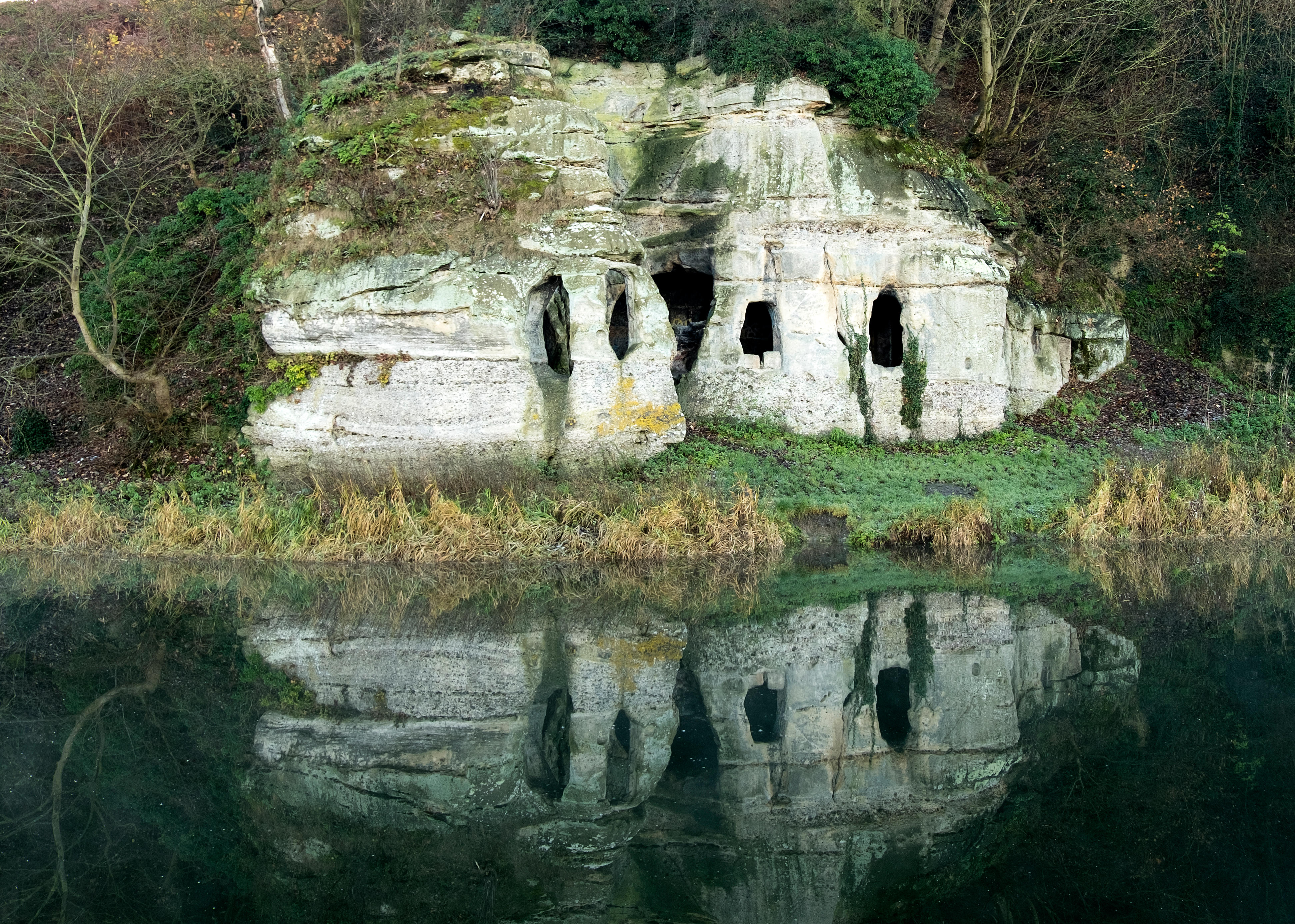The monarch during Medieval Britain was exiled and forced to take refuge in the Derbyshire caverns after he lost his throne in a battle.
Local legend said the eighth century caves, found in Foremark and Ingleby, were used to host rowdy parties in the 18th century.
The upper class were thought to spend their lively evenings in the secluded location.
However, archeologists from the Royal Agricultural University’s newly-formed Cultural Heritage Institute now recon the caverns probably date back to the Dark Ages.
The mysterious stone structures were originally carved out of the cliff edge by the River Trent.
They are believed to have been used for anchorites – religious hermits – who would essentially become “dead” to society and transform into living saints.
Edmund Simons, principal investigator of the project and a research fellow at the Royal Agricultural University (RAU), said in a press release: “This makes it probably the oldest intact domestic interior in the UK – with doors, floor, roof, windows etc – and, what’s more, it may well have been lived in by a king who became a saint.”
The investigator also noted three rooms, a chapel and three apses – common architecture in churches.
The cave network has been traced back to Saint Hardulph – also known as Eardwulf the king of Northumbria from 796 to 806.
A 16th century book revealed “that time Saint Hardulph has a cell in a cliff a little from the Trent”.
Historians have now built s “convincing case” that Hardulph was exiled to the cave after he lost his throne in battle.
Edmund continued: “It was not unusual for deposed or retired royalty to take up a religious life during this period, gaining sanctity and in some cases canonization.
“Living in a cave as a hermit would have been one way this could have been achieved.”
Mark Horton, a professor of archaeology at RAU, said in a statement: “It is extraordinary that domestic buildings over 1,200 years old survive in plain sight, unrecognised by historians, antiquarians and archaeologists.”
It is believed the former Northumbrian king could have been laid to rest at the Mercian royal monastery of Breedon-on-the-Hill in Leicestershire.
A trove of Anglo-Saxon carvings have been found there that may have been left to decorate his stone coffin.
The archeological revelation has been discovered in collaboration with Wessex Archaeology.
It is believed the caves were then used in the 18th century to host dinner parties for aristocrats like Sir Robert Burdett.
Researchers suggest Burdett modified the cave and updated some of the architecture to fit with the era.
It comes as people now have the opportunity to visit 8,000-year-old caves – where David Bowie and the Rolling Stones have performed.
The Chislehurst Caves are a 22-mile-long labyrinth of manmade tunnels that some people date back to as long ago as 6,000 BCE.
Plus, tourists can take a look at the tiny caverns in which ‘England’s last cave people’ lived.
The sandstone caves are located on the Staffordshire-Worcestershire border.
They were inhabited until the 1960s and are now owned by the National Trust.
Meanwhile, a magical Scottish cave “from a different planet” was voted best hidden gem in the world.
Staffa is an island of the Inner Hebrides and is famed for its hexagonal rock formations which were formed millions of years ago by volcanic eruptions.








